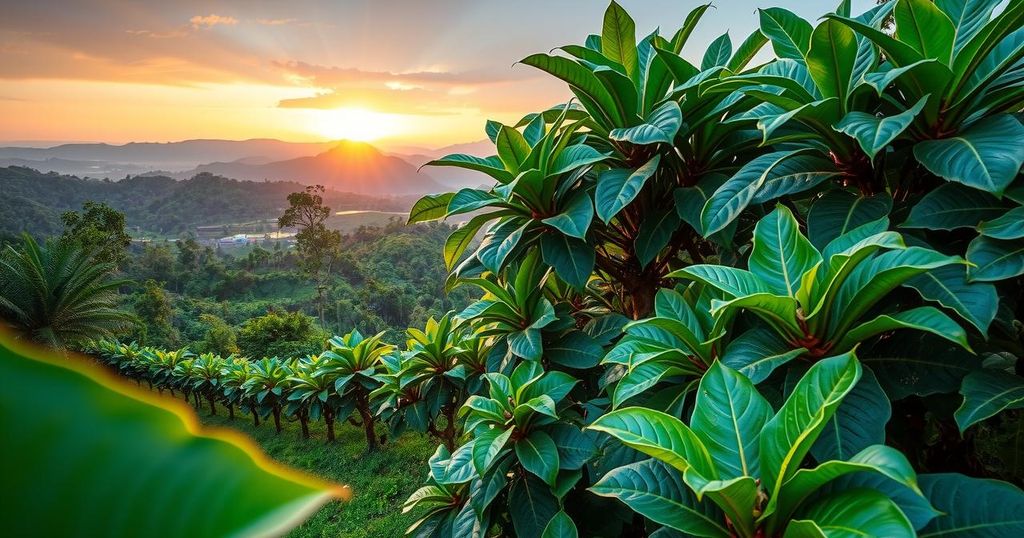The Impact of Climate Change on Valentine’s Day Chocolate Production

Valentine’s Day spending is projected to reach $27.5 billion in 2024, primarily on chocolate, which faces rising prices due to climate change impacts on cocoa production. Cacao trees require specific tropical conditions but are hindered by unpredictable weather, reducing yields. Farmers are adopting various strategies to adapt, while consumers are encouraged to support ethical sourcing practices. The recent spike in cocoa prices has resulted from low yields and market factors, emphasizing the relationship between climate change, consumer choices, and chocolate affordability.
Each year, American expenditure on Valentine’s Day gifts continues to rise, with forecasts estimating spending to surpass $27.5 billion in 2024. A significant portion of this expenditure is on chocolates, which constitute approximately 11.2% of Valentine’s Day purchases. In total, Americans are anticipated to consume around 58 million pounds of chocolate during this holiday. However, cocoa production is facing challenges brought on by climate change, resulting in increased chocolate prices.
Cacao trees predominantly thrive in tropical regions near the equator, especially in Southeast Asia, Central and South America, and West Africa. Notably, about 70% of the world’s cocoa supply is sourced from West Africa, particularly from countries like Cote d’Ivoire, Ghana, and Cameroon. These trees require specific conditions—warm temperatures, high humidity, and consistent rainfall—making them susceptible to the adverse effects of climate change.
Climate change influences cocoa production markedly, as erratic weather patterns can lead to droughts and excessive rainfall, affecting the highly sensitive cacao trees. High temperatures contribute to water evaporation from the soil, risking yield reductions. Some West African regions are experiencing escalating heat and dryness, compromising both human health and cocoa growth in these traditional cultivable areas.
Farmers are exploring various adaptive strategies to confront these climate-related challenges. Innovations include cultivating drought-resistant and disease-resistant cocoa varieties, implementing mixed agroforestry systems for better resilience, and enhancing soil and water management practices. Utilizing precision agriculture through mobile technology provides vital information about weather and market conditions, aiding farmers in adjusting to current demands.
Consumer choice plays a pivotal role in promoting sustainable practices within the cocoa industry. Purchasing ethically sourced chocolate with recognized sustainability certifications signals support for environmentally responsible farming. Brands engaged in agroforestry practices provide additional benefits, including fair labor policies and improved livelihoods for cocoa farmers. Researching firms’ sourcing methods can guide responsible consumer decisions.
As of 2023, cocoa prices have surged significantly due to reduced yields in key producing countries, driven by climate phenomena impacting rainfall and disease management. Over the past two years, prices have escalated by more than 300%. Factors such as market speculation and delayed efforts to enhance yields by planting more trees are contributing to sustained high prices for cocoa products during the upcoming Valentine’s Day.
Climate change poses a significant threat to the cocoa industry by disrupting weather patterns essential for cacao tree cultivation. Adaptation methods are being implemented to mitigate these effects, indicating a path forward for farmers. Consumers can steer the industry towards sustainability through informed purchasing decisions, while current cocoa prices reflect ongoing challenges in production. As Valentine’s Day approaches, the intersection of consumer habits and climate action becomes more evident in chocolate affordability and ethical sourcing practices.
Original Source: news.climate.columbia.edu






